Everybody has gone home from the fictional city of National Harbor, Maryland, after a week of making high-stakes trades and signings of a decidedly nonfictional nature. With the free-agent market being one of the weakest markets -- if not the weakest market -- ever, a lot of the focus of baseball's largest conclave was on a few giant trades. And one Giant trade.
Because trades are all about the future, given that nobody's actually playing games at this moment and trading/signing the past exists only in science fiction and in the minds of executives who acquire Matt Kemp, we've run the ZiPS projection for each player who shuffled around this week.
The teams are ranked by surplus value (expressed in wins), the projected difference between the total number of projected wins they picked up and the projected salary they expect to pay for the wins. However, don't assume this is a list of best-to-worst because it's not. Surplus value is a tool, a basic number to look at, but teams rightly don't value all wins the same. Time is a very big deal in baseball, and if you have good reasons to believe that wins right now can get you to the playoffs or even to a champagne drenching in late October, giving up more wins much later to get wins now is not only justifiable but downright smart. After all, a Ferrari is a lot more valuable than a bucket of water, but if you're dying of thirst in a desert, you'd much rather use $50,000 and overpay for the water than underpay for the Ferrari. OK, that's an extreme situation -- you won't typically find merchants in the Sahara Desert offering great deals on sports cars -- but you get the idea.
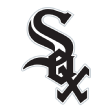 Chicago White Sox: plus-31.8 wins. Yup, the Sox did darn well trading two of their core players in Chris Sale and Adam Eaton. No single player is a guarantee for stardom, although ZiPS does see Yoan Moncada peaking at four wins a season as the average result. But the amount of talent for the future they picked up was tremendous. This was the winter for the White Sox to start a rebuild. Although there were possible scenarios the past two years in which the team was playoff-relevant, the fact remains that they didn't work out, and the team's window of opportunity was nearly shut. In a market in which money can't buy great players because they're simply not out there, what better time to shop players who would each be the most sought-after free agent if he had in fact been a free agent?
Chicago White Sox: plus-31.8 wins. Yup, the Sox did darn well trading two of their core players in Chris Sale and Adam Eaton. No single player is a guarantee for stardom, although ZiPS does see Yoan Moncada peaking at four wins a season as the average result. But the amount of talent for the future they picked up was tremendous. This was the winter for the White Sox to start a rebuild. Although there were possible scenarios the past two years in which the team was playoff-relevant, the fact remains that they didn't work out, and the team's window of opportunity was nearly shut. In a market in which money can't buy great players because they're simply not out there, what better time to shop players who would each be the most sought-after free agent if he had in fact been a free agent?
The big question is whether the White Sox can finish the job. Trading Sale and Eaton makes the remaining play of Jose Abreu, Jose Quintana, David Robertson and Todd Frazier much less valuable because the odds that they will have any effect on the team's ability to make the playoffs have skyrocketed. Maybe they keep Abreu and Moncada breaks into the majors and establishes himself, the pair being old teammates in Cuba, but there are still more moves to be made.
There's no reason the White Sox can't be the 2016 Cubs in four years if things go well, and it's about time the team started being a little more aspirational beyond just hoping to win 85 games and sneak into the playoffs.
 Milwaukee Brewers: plus-11.3 wins. Travis Shaw was never as good as he played the first couple months of the season, but he's also likely to be better than he played after May. There's no high ceiling for Shaw; he's too old for that, really. But he's valuable because his better-than-expected glove work at third is combined with an OK bat that's a better fit for his new park than his old one (Fenway has been a batting average-friendly and home run-cruel park to batters for more than a generation now). ZiPS projects Shaw to be about a league-average third baseman for the Brewers the next five years or so, with a .246/.308/.433, 20-homer projection in 2017. Mauricio Dubon projects long term as an Omar Infante/Martin Prado level of player, which the Brewers will happily take for six years.
Milwaukee Brewers: plus-11.3 wins. Travis Shaw was never as good as he played the first couple months of the season, but he's also likely to be better than he played after May. There's no high ceiling for Shaw; he's too old for that, really. But he's valuable because his better-than-expected glove work at third is combined with an OK bat that's a better fit for his new park than his old one (Fenway has been a batting average-friendly and home run-cruel park to batters for more than a generation now). ZiPS projects Shaw to be about a league-average third baseman for the Brewers the next five years or so, with a .246/.308/.433, 20-homer projection in 2017. Mauricio Dubon projects long term as an Omar Infante/Martin Prado level of player, which the Brewers will happily take for six years.
 Toronto Blue Jays: plus-1.5 wins. A low-key signing, Steve Pearce remains quite the underrated role player. Generally platooned and with some health concerns, Pearce hasn't displayed platoon splits much different from a typical right-handed batter, so he's not truly limited to only a lefty-masher role. Of the 235 players in MLB to get 1,000 plate appearances from 2014 to 2016, Pearce's OPS+ of 129 ranks 23rd, ahead of players such as Brandon Belt, Adrian Beltre and Yoenis Cespedes. That's not to say that Pearce is as valuable as those players -- his role has been more limited than theirs -- but that he has been a really good hitter as a role player. And faking being able to play second base just a little bit has value. ZiPS projects a .270/.349/.502, 14 HR, 129 OPS+ line from Pearce in limited play, and the Blue Jays are paying him peanuts. Whoever signs Mark Trumbo will likely be a lot less happy with him than the Jays will be with Pearce.
Toronto Blue Jays: plus-1.5 wins. A low-key signing, Steve Pearce remains quite the underrated role player. Generally platooned and with some health concerns, Pearce hasn't displayed platoon splits much different from a typical right-handed batter, so he's not truly limited to only a lefty-masher role. Of the 235 players in MLB to get 1,000 plate appearances from 2014 to 2016, Pearce's OPS+ of 129 ranks 23rd, ahead of players such as Brandon Belt, Adrian Beltre and Yoenis Cespedes. That's not to say that Pearce is as valuable as those players -- his role has been more limited than theirs -- but that he has been a really good hitter as a role player. And faking being able to play second base just a little bit has value. ZiPS projects a .270/.349/.502, 14 HR, 129 OPS+ line from Pearce in limited play, and the Blue Jays are paying him peanuts. Whoever signs Mark Trumbo will likely be a lot less happy with him than the Jays will be with Pearce.
 Kansas City Royals: plus-1.3 wins. I was actually surprised the Royals didn't get more for Wade Davis than they did -- either the market is even more worried about Davis' health than I am or the Royals really, really like Jorge Soler. Of course, Soler is a perfectly reasonable pickup for a team that's rebuilding, like the Royals -- because a rebuild is inevitable no later than after next season -- though he's a little confusing for a team that claims to still want to compete in 2017. The problem with Soler is that, yes, he has been injured, but the fact remains that he just hasn't really hit all that well in years. You don't magically get development time back.
Kansas City Royals: plus-1.3 wins. I was actually surprised the Royals didn't get more for Wade Davis than they did -- either the market is even more worried about Davis' health than I am or the Royals really, really like Jorge Soler. Of course, Soler is a perfectly reasonable pickup for a team that's rebuilding, like the Royals -- because a rebuild is inevitable no later than after next season -- though he's a little confusing for a team that claims to still want to compete in 2017. The problem with Soler is that, yes, he has been injured, but the fact remains that he just hasn't really hit all that well in years. You don't magically get development time back.
 Texas Rangers: plus-0.9 wins. Carlos Gomez might have saved his career down the stretch in Texas, hitting .284/.362/.543 for the Rangers after the Astros released him based on a dreadful .210/.272/.322 line. ZiPS projects Gomez to hit .255/.318/.418 in Texas with adequate defense in center field, good for 2.5 WAR. Given the improvements the Astros made before the winter meetings, it's good to see the Rangers realizing that these kinds of additions can help their chances of staying in front of their cross-state rivals again. A perfectly reasonable signing for the Rangers here.
Texas Rangers: plus-0.9 wins. Carlos Gomez might have saved his career down the stretch in Texas, hitting .284/.362/.543 for the Rangers after the Astros released him based on a dreadful .210/.272/.322 line. ZiPS projects Gomez to hit .255/.318/.418 in Texas with adequate defense in center field, good for 2.5 WAR. Given the improvements the Astros made before the winter meetings, it's good to see the Rangers realizing that these kinds of additions can help their chances of staying in front of their cross-state rivals again. A perfectly reasonable signing for the Rangers here.
 San Francisco Giants: plus-0.2 wins. Melancon's $62 million contract was the richest reliever contract in baseball history for two days. He's not the flamethrower some of the other top closers are, but you can't argue with results, and ZiPS projects Melancon to be more valuable in AT&T Park than in most other stadiums in baseball. Simply put, he allows more balls into play than other elite closers, and hit balls die in AT&T. ZiPS finds the valuation roughly fair for a contending team, and the Giants, unlike the Yankees, did not have the luxury of having a spare Dellin Betances just hanging around.
San Francisco Giants: plus-0.2 wins. Melancon's $62 million contract was the richest reliever contract in baseball history for two days. He's not the flamethrower some of the other top closers are, but you can't argue with results, and ZiPS projects Melancon to be more valuable in AT&T Park than in most other stadiums in baseball. Simply put, he allows more balls into play than other elite closers, and hit balls die in AT&T. ZiPS finds the valuation roughly fair for a contending team, and the Giants, unlike the Yankees, did not have the luxury of having a spare Dellin Betances just hanging around.
 Miami Marlins: plus-0.2 wins. The Marlins sneak a spot here by virtue of signing Jeff Locke to a major league contract. They paid little, they'll get little, but at least this time the Marlins aren't actually trading prospects to get a fifth starter.
Miami Marlins: plus-0.2 wins. The Marlins sneak a spot here by virtue of signing Jeff Locke to a major league contract. They paid little, they'll get little, but at least this time the Marlins aren't actually trading prospects to get a fifth starter.
 Seattle Mariners: plus-0.2 wins. This is the Giant trade I was talking about: Chris Heston to the Mariners for a player to be named. Heston's oblique was problematic in 2016, and he was terrible in the minors when he pitched, but there's at least a chance he'll bounce back to some sort of slightly-poor man's version of Jeremy Guthrie. That's something, at least.
Seattle Mariners: plus-0.2 wins. This is the Giant trade I was talking about: Chris Heston to the Mariners for a player to be named. Heston's oblique was problematic in 2016, and he was terrible in the minors when he pitched, but there's at least a chance he'll bounce back to some sort of slightly-poor man's version of Jeremy Guthrie. That's something, at least.
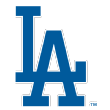 Los Angeles Dodgers: minus-0.3 wins. Rich Hill was one of 2016's great stories, surprisingly becoming the last man standing of all those young Cubs starters 10-15 years ago (Mark Prior, Kerry Wood, Carlos Zambrano and Sean Marshall). Even in his breakout season, he still wasn't healthy for the entire season -- plagued by blisters, the same malady that haunted Al Leiter and Josh Beckett at various times in their careers. Even with ZiPS not wanting to assume he's healthy, given the history, there's real evidence now that he's good enough to be worth the contract; ZiPS projects a 3.22 ERA from Hill in 17 starts in 2017.
Los Angeles Dodgers: minus-0.3 wins. Rich Hill was one of 2016's great stories, surprisingly becoming the last man standing of all those young Cubs starters 10-15 years ago (Mark Prior, Kerry Wood, Carlos Zambrano and Sean Marshall). Even in his breakout season, he still wasn't healthy for the entire season -- plagued by blisters, the same malady that haunted Al Leiter and Josh Beckett at various times in their careers. Even with ZiPS not wanting to assume he's healthy, given the history, there's real evidence now that he's good enough to be worth the contract; ZiPS projects a 3.22 ERA from Hill in 17 starts in 2017.
 Philadelphia Phillies: minus-0.3 wins. They signed Joaquin Benoit to be the closer for a team that still won't seriously challenge for the playoffs. Not that the rebuild isn't going well, but the team did tremendously outperform its Pythagorean record in 2016, something that teams simply don't maintain long term. The Phillies paid a few million more than is warranted for the chance to flip him into something better in July.
Philadelphia Phillies: minus-0.3 wins. They signed Joaquin Benoit to be the closer for a team that still won't seriously challenge for the playoffs. Not that the rebuild isn't going well, but the team did tremendously outperform its Pythagorean record in 2016, something that teams simply don't maintain long term. The Phillies paid a few million more than is warranted for the chance to flip him into something better in July.
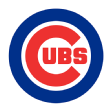 Chicago Cubs: minus-1.2 wins. From the Cubs' point of view, they're the World Series champions right now, so the prospect of keeping the team amazing is a lot more valuable to them than Soler's combination of low-floor and high-ceiling possibilities. Soler would have had a great deal of trouble just getting the playing time to shine, and the Cubs made the logical choice not to value his presence on the roster much.
Chicago Cubs: minus-1.2 wins. From the Cubs' point of view, they're the World Series champions right now, so the prospect of keeping the team amazing is a lot more valuable to them than Soler's combination of low-floor and high-ceiling possibilities. Soler would have had a great deal of trouble just getting the playing time to shine, and the Cubs made the logical choice not to value his presence on the roster much.
The Cubs also quietly picked up Koji Uehara at the end of the winter meetings, on a one-year deal reportedly worth $4.5 million, a rare exception trend among the teams paying obscene amounts of money for relievers in free agency. Uehara's not going to be closing, of course, but he still had a 3.45 ERA for the Red Sox in 2016, and ZiPS projects a 2.87 ERA in 37 2/3 projected innings for 2017. Combined, Davis and Uehara's projections amount to a 2.44 ERA in 92 innings for one year and $14.5 million, a make-your-own-Chapman sundae bar at the cost of Soler.
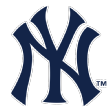 New York Yankees: minus-1.3 wins. Surprisingly, most of the negative value here is from the Matt Holliday signing rather than the much more expensive Aroldis Chapman deal. ZiPS projects Holliday as an injury-prone DH hitting .244/.325/.447, a rather unimpressive line for a hitting job. Given the injuries, decline and age, Holliday is not really a great candidate for a pillow contract.
New York Yankees: minus-1.3 wins. Surprisingly, most of the negative value here is from the Matt Holliday signing rather than the much more expensive Aroldis Chapman deal. ZiPS projects Holliday as an injury-prone DH hitting .244/.325/.447, a rather unimpressive line for a hitting job. Given the injuries, decline and age, Holliday is not really a great candidate for a pillow contract.
Chapman's valuation actually comes out fairly close to what ZiPS expects a team to end up paying for a closer in free agency -- in New York these days, an overpay of about minus-0.3 wins, which is like $2.5 million, is a pittance. The bigger problem is just the utility of Chapman in New York. These Yankees aren't the Yankees of a decade ago -- lobbing huge contracts at every top free agent -- so when you're talking about a team that already has a top-notch closer, there's a real question about the value he adds.
Chapman is great, of course, but he's also just a reliever -- note that the now-largest reliever contract in history is just about what Jeff Samardzija got a year ago -- and there's a pretty hard ceiling on just how many wins a closer can be worth. Given the existence of Betances, is the difference between Chapman and, say, Brad Ziegler worth $50 million, given the team's other needs? I'd say no.
 St. Louis Cardinals: minus-1.6 wins. The Cardinals tend to be a thrifty franchise, so giving five years and somewhere between $80 million and $90 million (unclear at press time, so I'm splitting the difference and calling it $85 million) isn't the usual St. Louis move. In fact, if you look back at the histories of the Cardinals and the Royals since John Mozeliak took over in St. Louis, the Royals have actually spent more in major league free agency than the Cardinals have.
St. Louis Cardinals: minus-1.6 wins. The Cardinals tend to be a thrifty franchise, so giving five years and somewhere between $80 million and $90 million (unclear at press time, so I'm splitting the difference and calling it $85 million) isn't the usual St. Louis move. In fact, if you look back at the histories of the Cardinals and the Royals since John Mozeliak took over in St. Louis, the Royals have actually spent more in major league free agency than the Cardinals have.
This amount of money sure sounds like a lot for Fowler, but, in the big picture, that's about what a solidly above-average player short of stardom should expect in free agency without major red flags. Fowler has dispelled some of the concerns about his center-field defense -- he's not great, but he's adequate now, and his Houston time looks like an outlier. The loss of a draft pick does hurt, making the Cardinals overpay a little, but St. Louis is a team that has the misfortune of being a contending team playing in the same division as the Cubs, so sometimes it's necessary to overspend to fill a hole under these circumstances. I would have preferred the Cardinals to have signed Carlos Gomez for a year and kept the draft pick, but this works.
 Colorado Rockies: minus-6.4 wins. Unlike the teams below them in this list, the Rockies' big move, signing Ian Desmond to a five-year, $70 million contract, doesn't represent a lot of "right now" wins for the team. And most of that isn't even Desmond's fault but rather that of the Rockies, who insist that they're going to play Desmond at first base. If we take them at their word, this is problematic in that it practically eliminates the chances of this contract working out for the Rockies because it means chucking a large portion of Desmond's value in the waste bin.
Colorado Rockies: minus-6.4 wins. Unlike the teams below them in this list, the Rockies' big move, signing Ian Desmond to a five-year, $70 million contract, doesn't represent a lot of "right now" wins for the team. And most of that isn't even Desmond's fault but rather that of the Rockies, who insist that they're going to play Desmond at first base. If we take them at their word, this is problematic in that it practically eliminates the chances of this contract working out for the Rockies because it means chucking a large portion of Desmond's value in the waste bin.
Desmond playing shortstop at a few runs below average -- if you're freaking out about his two-week run of errors in 2015, you're doing the analysis thing wrong -- would make this a solid signing, at least for a team that actually projects to be good in 2017. Play him in center field? Also an interesting move in that, although he didn't play well in center last year, it was also last-minute on-the-job training and Desmond has solid speed and could be better.
But at first base? There's little chance that he can get enough value defensively to make his bat worth it. The last time Desmond hit at the level of an average first baseman was 2013, after all. Yes, playing in Coors makes his raw numbers go up -- ZiPS projects .281/.333/.466 with 25 homers and 99 RBIs -- but that doesn't actually make him better. A .799 OPS comes out to only about a 101 OPS+ in Coors.
There's always the chance that Desmond's signing is some grand plan to get value in the trade market elsewhere. Well, we can't evaluate trades that haven't happened, and it's hard to have a lot of faith, given the franchise's moribund planning history of every year hoping a wizard just shows up and lets the team win 83 games. This is an organization that squandered any trade value by hanging on to Justin Morneau, Mike Cuddyer, Jorge De La Rosa and now Carlos Gonzalez, among many others. It's a franchise that moves as if it wants to be the 2015 Padres rather than the 2016 Cubs, which is a shame, given the young talent coming through the system that the Rockies could have spent the past two to four years buttressing, rather than hanging on to performance that would never -- and didn't -- contribute to a real playoff contender.
They shouldn't be all sad that I'm not evaluating trades that only the Ghost of Transactions Future knows about, given that they're still interested in Mark Trumbo, a strong candidate for being this winter's worst free-agent signing.
So, Rockies, show, don't tell.
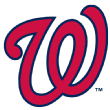 Washington Nationals: minus-13.0 wins. The Nats went into the meetings determined to make moves to get the team over the top and challenge the Cubs. Before picking up Eaton, they were in on the Sale sweepstakes and were highly interested in Andrew McCutchen. Picking up Eaton was expensive, without a doubt, but some of the talk about this being a major disaster is way over the top.
Washington Nationals: minus-13.0 wins. The Nats went into the meetings determined to make moves to get the team over the top and challenge the Cubs. Before picking up Eaton, they were in on the Sale sweepstakes and were highly interested in Andrew McCutchen. Picking up Eaton was expensive, without a doubt, but some of the talk about this being a major disaster is way over the top.
Eaton isn't a rental by any stretch of the imagination. The fact that he has a five-year deal worth -- if all the options are picked up -- a mere $38 million is a very big deal. He's actually under team control for only a year less than Lucas Giolito or Reynaldo Lopez will be, and $38 million is not much for what it fetches you on the free-agent market. It's a stretch to consider him a 6.0 WAR player as he was in 2016, but even at the 16.6 WAR ZiPS projects from him in center over the next five years, he's a valuable asset. More valuable than McCutchen, actually, the three years for $10 million more being preferable with the Pirates center fielder being riskier these days than he ever looked before 2016.
The Nats likely will miss the players they gave up to bring in Eaton, but they're going into this with their eyes open. There's not even a remote certainty than Giolito will be Max Scherzer in four years, but for a team that knows it's competitive now, Eaton now might still be more tempting than Scherzer later.
 Boston Red Sox: minus-26.3 wins. As with Washington, this isn't evidence of a robbery or anything, simply a team with money that wants some serious wins now in a division that remains there for the taking. Sale is a Cy Young candidate any season he's healthy and, at a very team-friendly contract that ZiPS estimates is netting the Red Sox 14 more wins than they're paying for, a tremendous addition to a rotation that now has the reigning AL Cy Young winner as the team's No. 3 starter. And Tyler Thornburg is a very good reliever who comes a lot cheaper than some of the big-name relievers out there.
Boston Red Sox: minus-26.3 wins. As with Washington, this isn't evidence of a robbery or anything, simply a team with money that wants some serious wins now in a division that remains there for the taking. Sale is a Cy Young candidate any season he's healthy and, at a very team-friendly contract that ZiPS estimates is netting the Red Sox 14 more wins than they're paying for, a tremendous addition to a rotation that now has the reigning AL Cy Young winner as the team's No. 3 starter. And Tyler Thornburg is a very good reliever who comes a lot cheaper than some of the big-name relievers out there.
Losing Moncada does hurt, though, and the Nationals and Giolito, the Sox are cognizant of the value they're giving up -- it's the only way to add a six-win pitcher right now. ZiPS compares Moncada to a lot of young star infielders in history, with his top comp being Melvin Upton Jr. (don't grimace; he was a tremendous prospect who became disappointing much later on). Mike Kopech remains very raw, and his comparable-player list reflects that, with a wide variety of flamethrowing young pitchers with control issues, from pitchers such as Daniel Cabrera to the maddening Bobby Witt to some Nolan Ryan dude you might have heard about.
